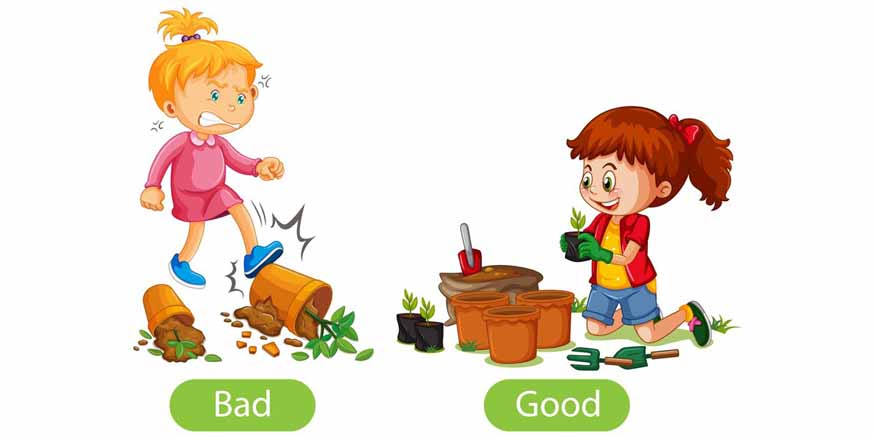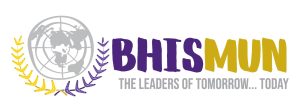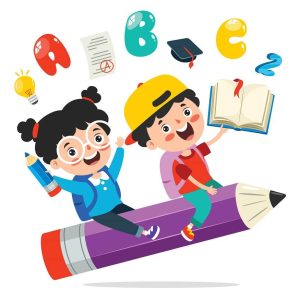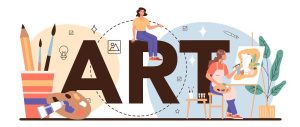Antonyms Made Easy: Opposite Words for Young Learners

Understanding opposite words in English is like discovering two sides of a coin. Opposites, like big and small, hot and cold, are important for communication. They help us describe things accurately and express ourselves better. We’ll explore various opposite pairs, from simple ones like happy and sad to more complex ones like fast and slow.
Through engaging activities and examples, children will learn how to identify and use opposite words effectively. Whether it’s through games, worksheets or interactive resources, our goal is to make learning about opposites an enjoyable experience. By the end, young learners will have valuable tips to incorporate opposite-word learning into everyday activities. Let’s begin exploring the amazing world of opposites together.
What are Opposites?
Opposites are words that have opposite meanings. For example, “up” and “down” are opposites because one means going higher while the other means going lower.
Understanding opposites is essential for language development. It helps us to describe things accurately and communicate effectively. Imagine if we only knew the word “big” but not “small.” We wouldn’t be able to express the size of objects properly. Opposites provide us with a richer vocabulary to express ourselves.
Knowing opposite words in English also enhances our comprehension of the world. It allows us to make comparisons and understand relationships between things. For instance, understanding “fast” and “slow” helps us grasp the concept of speed.
Moreover, learning opposites is an essential aspect of cognitive development. It encourages critical thinking and problem-solving skills. By recognizing opposites, children learn to categorize information and make connections between different concepts.
Lastly, opposites play a vital role in language development by enriching vocabulary, facilitating communication and enhancing cognitive skills. They provide a framework for understanding the world and expressing ideas effectively. Therefore, introducing children to opposites from an early age is very important for their overall linguistic and cognitive development.
Common Opposites Words in English for Kids
In this section, we’ll explore common opposites that kids encounter in their daily lives. From size to temperature to emotions, understanding these pairs helps children express themselves better with all antonyms words listed below:
- Kids encounter opposites every day, shaping their understanding of the world. Let’s start with “big” and “small.” When something is big, like an elephant, it’s large in size. But when it’s small, like a ladybug, it’s tiny and not very big at all.
- Next up, we have “hot” and “cold.” When you sip hot cocoa, it warms you up inside, but when you eat ice cream, it’s cold and refreshing. These opposites help us describe how things feel in terms of temperature.
- Now, let’s talk about “happy” and “sad.” When you get a surprise visit from a friend, you feel happy and joyful. But when you lose your favourite toy, you might feel sad and teary-eyed. These opposites describe our emotions and how we feel inside.
- Moving on to “day” and “night.” During the day, the sun shines bright and we play outside. But at night, it gets dark, and we sleep snugly in our beds. These opposites mark the passage of time and our daily routines.
- Lastly, we have “fast” and “slow.” When you ride a rollercoaster, it goes fast, zooming around curves and loops. But when you’re on a lazy river ride, it moves slowly, gently floating along. These opposites describe how quickly things move or happen.
Understanding and exploring all antonyms words list helps kids express themselves better and navigate the world around them with clarity and confidence.
Why opposites are important to learn?
Opposites are very essential for learning because they help in various ways:
- Cognitive Development: Learning opposites stimulates critical thinking and problem-solving skills. It encourages children to make connections between different concepts and enhances their cognitive abilities.
- Vocabulary Expansion: Understanding all antonyms words expands vocabulary by introducing new words with contrasting meanings. This not only enriches language skills but also improves communication abilities, allowing children to express themselves more effectively.
- Understanding of Concepts: Opposites provide a framework for understanding abstract concepts. For example, knowing opposites like “fast” and “slow” helps children grasp the concept of speed, while opposites like “hot” and “cold” aid in understanding temperature differences. Children can better understand and navigate the world around them by comprehending opposites.
Finally learning opposites is important for cognitive development, vocabulary expansion, and understanding abstract concepts. It equips children with essential skills and knowledge that are fundamental for their overall learning and development.
Learning Opposites Through Activities
Learning opposite words can be enjoyable through various activities that engage kids’ minds and senses:
- Games: Playing “Opposite Charades” or “Opposite Match-Up” can turn learning into a fun-filled adventure. In these games, kids act out or match all antonyms words, reinforcing their understanding while having a blast.
- Worksheets: Offering printable worksheets with all antonyms word pairs allows kids to practice identifying opposites independently. These worksheets provide structured exercises that reinforce learning and help solidify their grasp of opposite concepts.
- Interactive Online Resources: Explore websites or apps that offer interactive activities related to opposites. These resources provide a hands-on approach to learning, allowing kids to engage with opposite word pairs in a dynamic and stimulating way.
By incorporating these activities into learning, children can actively explore and impute opposite concepts, building a strong foundation in language development. With the right tools and resources, mastering antonyms becomes an exciting journey of discovery for young learners.
In conclusion, introducing opposite words to kids is essential for their language development and cognitive growth. Through engaging activities and exploration of antonyms, children not only expand their vocabulary but also deepen their understanding of the world around them.
To continue nurturing this learning journey, we invite parents and educators to explore further opportunities for interactive learning at Billabong High International School. Explore Billabong High International School for an exciting learning experience. Our caring teachers and innovative programs create a nurturing environment where your child can thrive. Schedule a visit today to discover how we can support your child’s growth and development.













